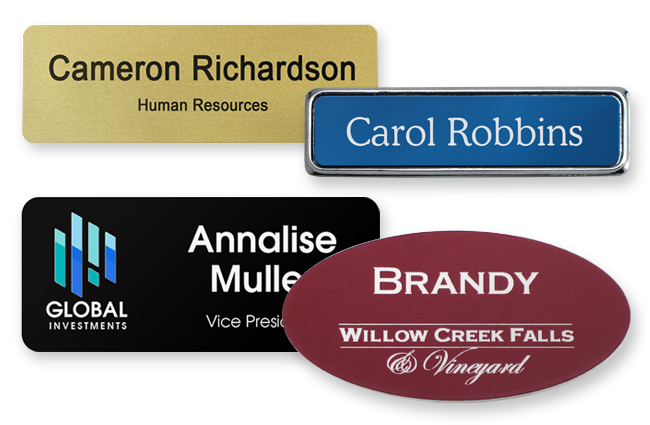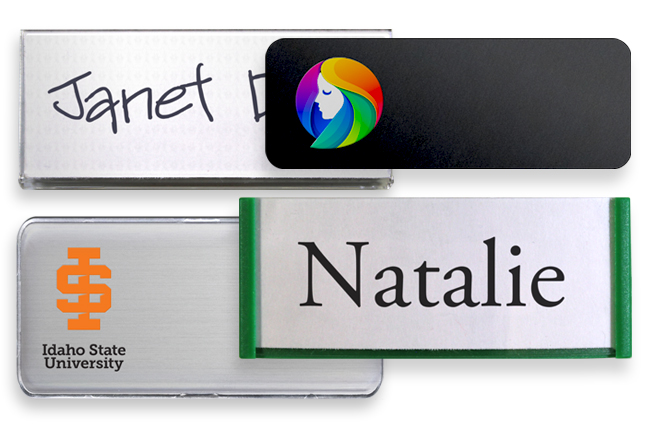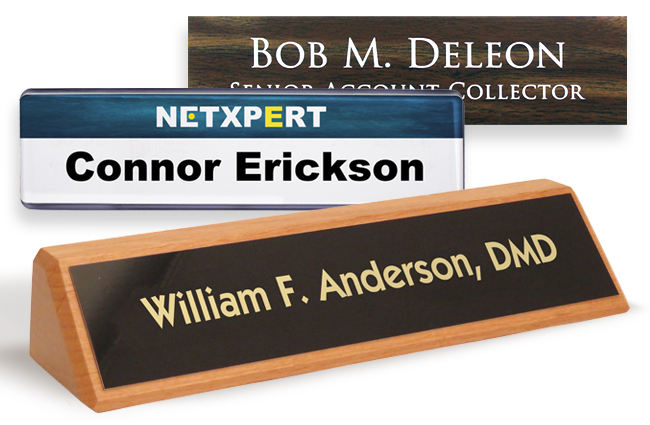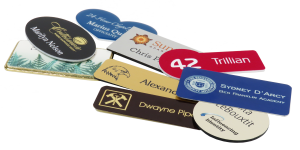When a business is able to hire and engage with the right people, they will be able to operate better. And, as we are nearing the holiday season, businesses are looking for necessary holiday help. Part of this includes quickly identifying employees so customers and clients will be able to locate who can help them. Simply provide each employee with a name tag to help them communicate with your customers.
Name tags create a personalized experience as they make it quick and easy for customers to quickly see employees. These tags play an important role in developing effective communication between employees and customers for several reasons. From helping with employee visibility to increasing business approachability, name tags are an essential tool for any business to have.

Engage Seasonal Workers with Name Tags
For many businesses, seasonal help is necessary to handle holiday demands. Not only are seasonal employees cost effective, but they also help your business remain flexible in adjusting the size of your workforce. During peak holiday times, these temporary employees are often necessary to have around to help keep full time operational coverage. Without these crucial employees, you couldn’t keep your business running the way your customers and clients are used to.
Adding seasonal and temporary employees to your staff has huge benefits for your company. It makes it easier for full time staff to enjoy the holidays while they maintain work/life balance, and you can keep your business steady. You will also have enough people to cover any increase in hours or demand for products and services.
So, have you already started the process of hiring your seasonal employees? If not, now is the time. Of course, you will need to make sure you train them thoroughly before your holiday rush hits! With that being said, as a business owner, you should also be concerned with how well your new help will be able to work with your customers.
Tip #1: As always, name tags help to engage employees and customers.
When employees wear identification, they help to enhance the overall customer experience. This, in turn, will make customers feel more valued. When a customer knows an employee’s name, they can quickly establish a level of trust with them. Name tags humanize interactions and help customers feel more comfortable when shopping or doing business with your company.
Name tags also express a sense of professionalism and being organized. When employees wear name tags, it shows that the company takes customer interactions seriously and is committed to providing a higher level of service. Employee identification also holds them more accountable for their actions and behavior. Name tags encourage staff to provide excellent customer service and uphold your brand’s reputation.
Tip #2: Decorating is easy with custom ribbon rolls.
Be creative in your store or shop by using custom ribbons to promote sales and products. Ribbon rolls are eye catching and will help with displays and packaging. Use these ribbons in a variety of ways, such as wrapping around products, decorating packaging or creating displays. Their versatility allows you to showcase your business creatively.
When using custom ribbons for promotions and sales, make sure that you consider how the design works. Always provide messaging that aligns with your branding and the purpose of any sale. Remember to consider the placement of the ribbon rolls and make sure that they are easily noticeable to customers.
Decorating for Success: Business 101
The key to a successful retail business is product presentation. No matter what your company sells, whether it’s furniture or cookies, product packaging and store design play a key role in how well your business performs. Take some time right now to learn about an easy to use tool that will help you decorate for success: RIBBONS.
Tip #3: Custom signs engage your holiday helpers.
Begin the season with the early fall holidays by keeping your store current with up to date signage. The signs can be customized or simple office signs. From holiday hours to indicating entrances and more, engraved signs are your customer’s best friends.
Offer special promotions or discounts that are tied to the early fall holidays. Then, use signs to communicate these sales so customers can take full advantage. Or show off products that are relevant to any holiday or season. Use your creativity to promote Back to School, Halloween, Thanksgiving and other holidays or special events.
PRO TIP: Extend your signage efforts to social media by customizing signs with a QR code, helping your customer base find your channels and interact with you. This will help create an online buzz and attract a wider audience.
Tip #4: Making award plaques work for you.
Keep your holiday momentum going by awarding your staff and teams as they achieve their goals. You encourage improvement by consistently recognizing your staff and helping them set well defined goals. Custom award plaques help you provide meaningful rewards for a job well done. And by acknowledging your employees’ success, you influence your business’s success.
Custom Plaques & Employee Recognition
From promoting accomplishments to motivating employees, custom plaques are a unique and personal way to connect with coworkers and other colleagues. Motivating employees to stay on track while at work can often be problematic. Use these custom plaques to go beyond highlighting someone’s achievements and help them see just how useful they are to your company.
Engaging with Employees and Customers
By strategically incorporating these tips, you can create a memorable and engaging shopping experience for your customers during the holidays while keeping your business’s atmosphere current and exciting.
SHOP CUSTOM PRODUCTS NOW










